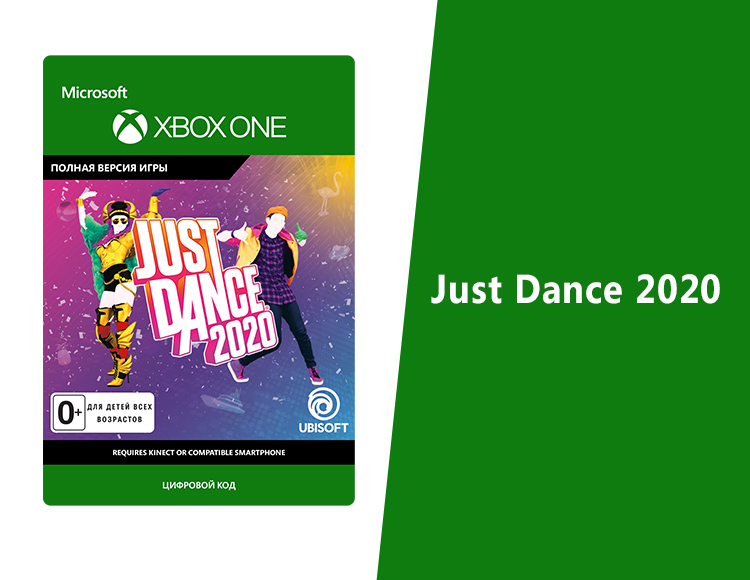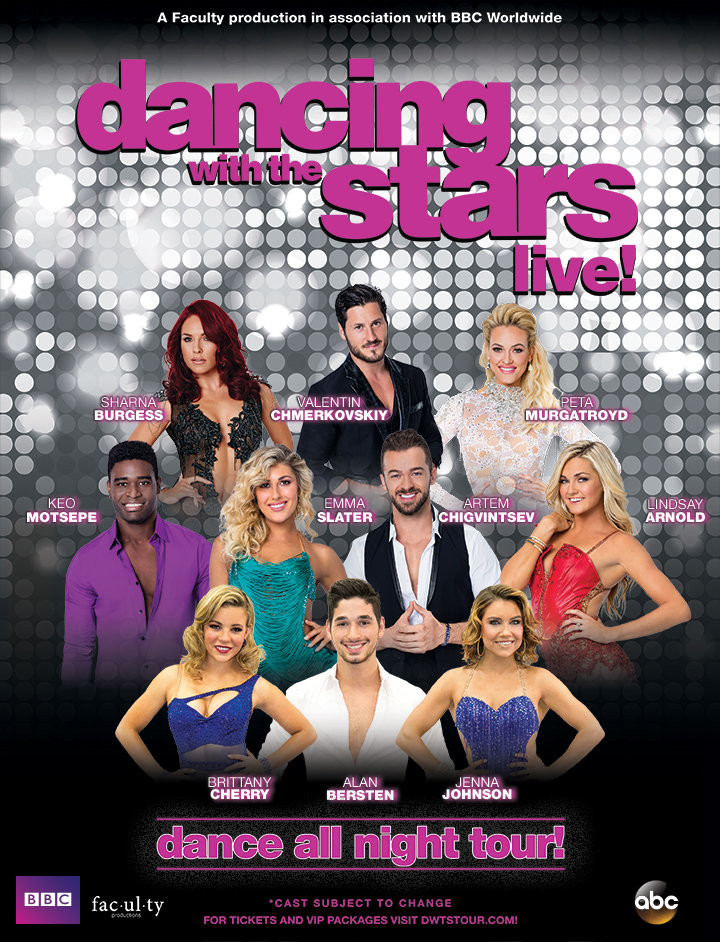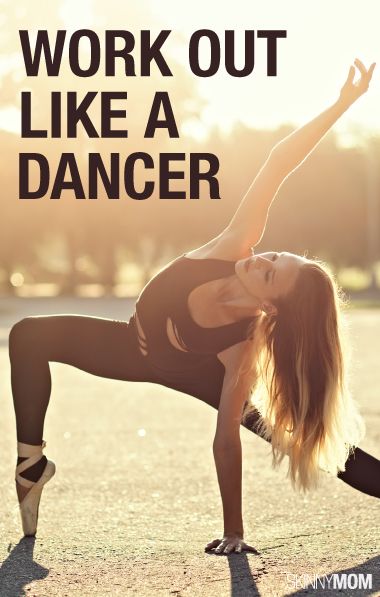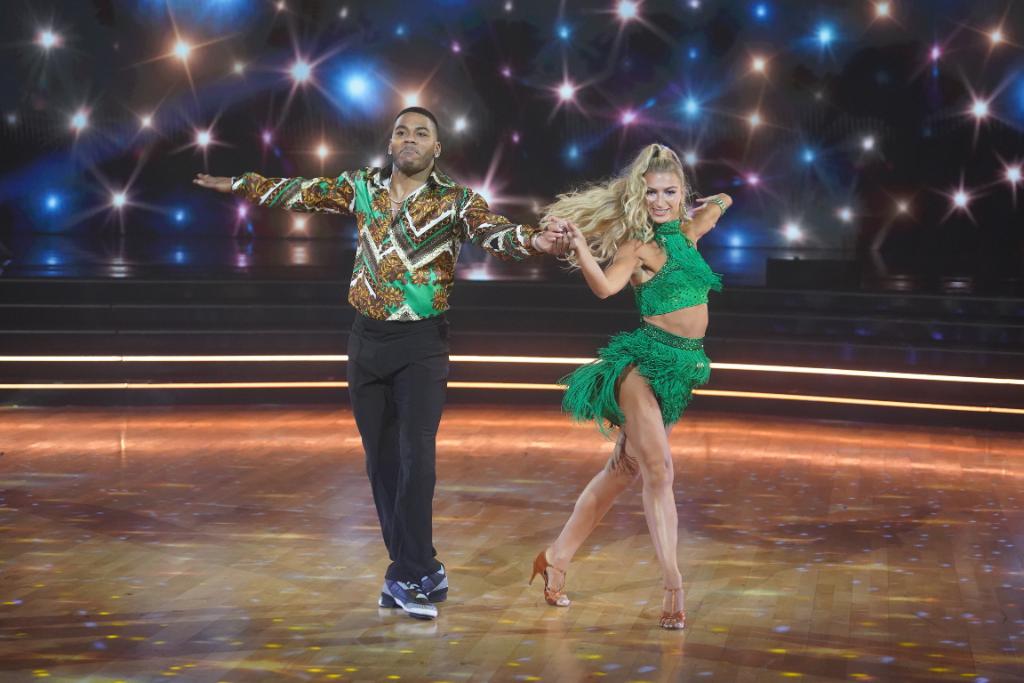How to win a dance off
the rules of street dance competitions
© Little Shao/Red Bull Content Pool
Street dance battles follow their own rules, and sometimes they’re not that easy to understand. Here's a basic rundown to help you follow and understand all the elements of a competition battle.
By Emmanuel Adelekun
8 min readPublished on
These are the basics for competitions
O'trip House doing a routine
© Little Shao/Red Bull Content Pool
Most competitions are straight knockout battles. Some involve two individual dancers competing against each other in one-on-one battles, but you also have competitions where teams of dancers, known as crews, compete against each other. These crews can be anything from two dancers in each crew, up to eight or ten dancers, and sometimes more.
In crew battles dance routines involving anything from two members to the whole crew, are usually allowed to be performed when it is that crew's round. The other crew do not have to do a routine in response if they don't want to, it is completely up to each crew to decide what they do in each round unless the competition's specific rules say otherwise.
Individuals, or crews, dance one at a time in the middle of the dance floor. There is a chosen number of times each dancer, or crew, gets to dance, called rounds.
Dancers go back and forth, doing their rounds, until they have finished and then the chosen panel of judges individually decide who they believe won the battle by pointing at their personally chosen winner, or holding up a card with their winner's name on it.
Check out an example in the clip below:
6 min
Shigekix vs Alkolil – final battle
B-Boys Shigekix and Alkolil battle each other for the Red Bull BC One World Final 2020 title.
Shigekix
The winner of the battle goes on to the next round and the loser is knocked out of the competition.
This goes on until there are two dancers, or two crews, left, at which point there is a final battle and an overall winner of the event is chosen.
Logistx is the Red Bull BC One B-Girl champion of 2021
© Romina Amato / Red Bull Content Pool
How many competitors are in a competition?
The average number of dancers picked to battle in a competition is usually 16 individual dancers or eight to 16 crews, competing in one chosen style, or in a mixed styles battle. But there can be anything from four to 32 dancers, or crews, competing in the main battle.
To compete in the main battle the dancers must first be picked from a qualification, in which they earn the right to compete in the main event by being picked by the judges. There can be anything from 30 up to 500 dancers entering a qualification, which is usually done in five different ways:
A Showcase Round: This is where the dancers are called up to perform, one by one, in front of the judges.
 Their performance is scored and when everyone has been seen by the judges, they then pick the dancers with the highest scores to compete in the main competition.
Their performance is scored and when everyone has been seen by the judges, they then pick the dancers with the highest scores to compete in the main competition.Showcase Battles: In this dancers, or crews, compete against each other in showcase battles that usually are only one round each, or have a time limit if it's crews. No winner is picked from the battle, the dancers are simply scored by the judges on their performance in the battle and the judges pick the highest scoring dancers, or crews, to compete in the main competition.
Cypher Qualification: A Cypher is the term used when dancers gather in a circle and, one-by-one, dance inside that circle. Some competitions use this to determine who will be picked for the main competition. When this happens the DJ will usually play music for anything from 30 minutes up to an hour and a half. Dancers usually are given a sticker with a number on it and then form their cyphers and simply dance as much as they want.
 The judges go from circle to circle watching the dancers and writing down the numbers of the ones who impress them the most. Once the time limit is up the judges get together and find out which numbers they all wrote down and these are the ones picked to battle in the main competition.
The judges go from circle to circle watching the dancers and writing down the numbers of the ones who impress them the most. Once the time limit is up the judges get together and find out which numbers they all wrote down and these are the ones picked to battle in the main competition.Being a winner of a previous Qualification Battle: This is when the dancers chosen to compete in the main competition are winners of another competition, in which they won the right to then compete at this later one.
By Invitation: The fifth and last one is through simple Invitation. This is when a dancer has earned a well known reputation through doing well at, and winning, various competitions locally or internationally, and so are then invited by an event promoter to come and compete at their competition.
Who are the judges and what is their job?
Judges are usually well-known, respected dancers who have earned their place on the panel through years of competing and winning, or from being known for their historical contribution to the dance scene.
Competitions always have an odd number of judges to avoid ties, and usually are a panel of three or five individuals.
Each judge usually only has one vote in each battle and the winner of a battle is the dancer who gets the most votes.
The judges point at the winner
© Gianfranco Tripodo/Red Bull Content Pool
Sometimes there ends up being a tied decision, which usually happens in two ways:
Judges themselves are allowed to use their individual vote as a tie if they believe the battle is drawn. This can result in the battle itself being a tie if all the judges vote a tie.
If one judge votes a tie and then the other judges evenly vote separate ways.
If this happens the competing dancers, or crews, will then have to battle one more round for the judges to then vote on again. If there is another tie then the dancers do another round, and will continue to do this until the judges come to a decision that isn't a tie.
But, if all the judges, apart from one, vote a tie, then the dancer who gets that one vote is the winner.
What are the judges looking for to determine the winner?
To make their decision, judges usually all have a general criteria which consists of about eight elements that they all look at. In no particular order, these are...
Musicality
How well a breaker connects with and expresses the music through their dance.
Foundation
Showcasing mastery of the basics top rock and footwork steps, go downs, transitions, freezes and power moves.
Character
How well a breaker expresses their personality through their dance.
Difficulty of movement
The level of dynamic movement a breaker possesses and showcases.
Style
If a breaker showcases a way of moving that’s unique to them.
Execution
Performing moves in a clean and secure way, without messing up.
Composition of round
Telling a story with your round, having a beginning, middle and end that makes sense and flows.
Originality
Coming up with fresh variations on existing moves, or completely new, and creative moves, and ways of moving that the judges haven't seen before.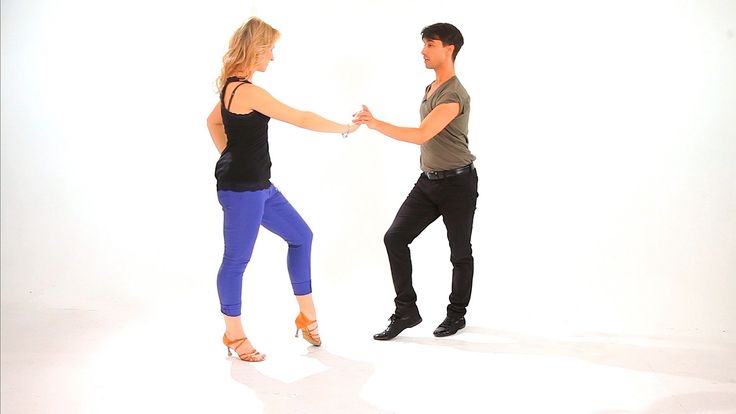
When the battle is a straight one-on-one knockout competition, judges will take the whole criteria into account, with each judge deciding for themselves which elements carry more weight than others. But when a battle follows a different concept or format, certain elements of the criteria can then become more important than others and change how a judge judges a competition.
Here's a list of four different competition formats and what criteria elements might carry more weight in the judge's decision for each one:
Qualification/Showcase/Prelim Rounds: Judges can only pick a small number of qualifying breakers in these and they have to be strict in their scoring to make their selection, and so 'execution' becomes one of the biggest elements in their criteria. Any mess-ups or crashes from breakers failing badly to execute their moves makes it a lot easier for a judge to narrow down their picks, and score that breaker low. Character also plays a big role here, as does 'difficulty of movement'.

Cypher king/queen competitions: Style, character, and 'musicality' usually are the more valued elements on a judge's criteria, for a cypher competition, which take place in the circles that breakers form and, one-by-one, dance inside. Breakers will usually be given a sticker to wear with a number. Judges will then spend the time watching the cyphers and writing down the numbers of the breakers who impress them the most. (Sometimes the judges are unknown and could be one of the breakers in the cyphers.) Once the time limit is up the judges then get together, decide who impressed all of them the most and then that person is crowned the cypher king or queen.
Crew battles: Those who are judging a crew battle are usually called upon to grade multiple numbers of rounds from each side; this could be as few as the rounds each in a three-on-three battle, or up to as many as 16 rounds per crew if it's a full eight-on-eight crew battle with somewhere in the region of a 15-minute time limit.
 The unique thing about a crew battle is that it gives a chance for each side to showcase every element in a judge's criteria by strategically sending out breakers who are strong in particular criteria elements. This means that a good crew can dedicate the order of the criteria the judges use with the strategy with which they send out their team members.
The unique thing about a crew battle is that it gives a chance for each side to showcase every element in a judge's criteria by strategically sending out breakers who are strong in particular criteria elements. This means that a good crew can dedicate the order of the criteria the judges use with the strategy with which they send out their team members.
Final
Watch as crews showcase their skills at the 30th anniversary of Battle of the Year in Montpellier, France.
The exception: crowd-judged battles
Some events, like Red Bull Dance Your Style, are judged by the audience, who might not understand the technicalities of dancing but are fans who come to enjoy the competition. When crowds are judging, usually the highest things on the criteria becomes difficulty of movement and character. If a breaker can drive a crowd crazy by doing spectacular, unbelievable, high-level moves, the crowd are usually more likely to vote for that dancer. Musicality is also big here but usually has to be executed to a very high level for an audience of fans to really understand and see. A crowd isn't usually too concerned with execution, foundation, or how a round is put together. They usually want to be wowed with moves and drawn in by a dancer's character.
Musicality is also big here but usually has to be executed to a very high level for an audience of fans to really understand and see. A crowd isn't usually too concerned with execution, foundation, or how a round is put together. They usually want to be wowed with moves and drawn in by a dancer's character.
Crowd voting at Dance Your Style
© Alex Grymanis/Red Bull Content Pool
How to stop choking in dance battles | by Jason Pu
Source: Key and Peele“The adrenaline that leaves him nervous before every battle ends up helping him in his performances.”
That’s straight from a bio of Sunni, one of the best breakers in the world, holding titles like 1st place in the 2016 and 2017 UK B-boy Championships 1v1 competition.
Whether you’re a beginner or a pro, it’s completely normal to feel jittery or anxious before a dance battle. This feeling can take over our bodies and cause us to freeze, and not in the b-boy sense — it’s the dreaded “choke.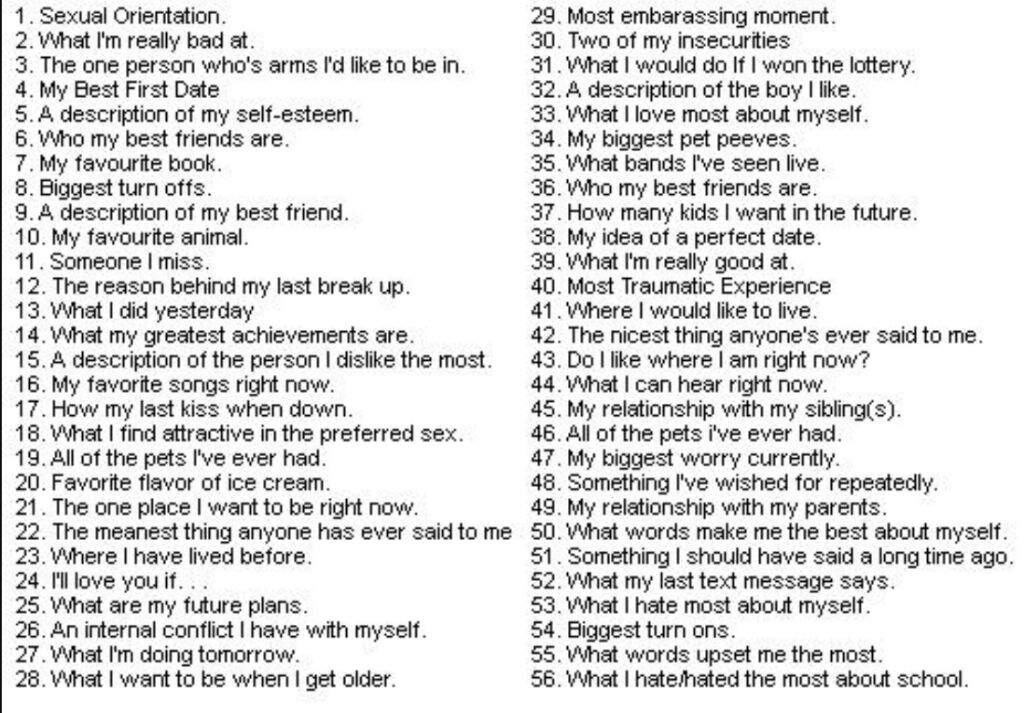 ”
”
One common phenomenon at work here is the fight-or-flight response, which helped our prehistoric ancestors survive, yet gives us butterflies when we speak in public.
The fight-or-flight response is a stress response caused by a perceived danger or threat. Dance battles aren’t really dangerous (Stomp the Yard bamboozled us). However, the competitive aspect of battling can still trigger the response. When “flight” takes over, we choke. Try the following tips to avoid being overwhelmed by anxiety in your next battle:
- Be prepared to win, or at least believe you can. Dance battles aren’t so scary if you’re all set with your own moves and strategy. Good preparation allows you to tilt the scales towards “fight” over “flight,” action over choking. When your opponent still seems more skilled than you, it’s time to use the concept of perceived control: belief in one’s ability to influence outcomes. A study of elementary school students showed that higher perceived control leads to higher engagement, and thus better performance.

- Get enough sleep. You might be thinking that these tips are way too obvious, but this one is worth repeating. Sleep regulates the reactivity of the amygdala, a part of the brain that is involved in processing emotions. Sleep deprivation leads to overreactions to negative stimuli — in other words, you’re more likely to choke under pressure if you don’t get a good night’s sleep.
- Cognitive reappraisal is an emotional regulation technique that involves looking at situations from alternative perspectives. Some questions to ask yourself are “What’s really the worst that could happen, and would I live through it?” or “If I were in a better mood, how might I be thinking about this situation?” Your answers should help you to feel more balanced, and once again, avoid failing in high-pressure situations.
The key is to managing the fight-or-flight response so that it helps you more than it hurts you. You’ll need to find your own sweet spot — everyone has different emotional reactivity levels and thresholds.
You’ll need to find your own sweet spot — everyone has different emotional reactivity levels and thresholds.
For example, some people perform well under stress, especially those that harness aggression in their dance. These individuals can be lenient with regulating their emotional response, because they’re more comfortable with the increase in adrenaline. B-boy Gravity could be considered this type of dancer. He responds to energy and aggression twofold, and tends to crank up the intensity of the battles that he’s in.
The rest of us should try to be more mindful of our emotional reactions. We’ll still get increased energy from our bodies’ inevitable adrenal response, but hopefully less of the extreme heart rate, tunnel vision, shaking, etc.
It’s that simple — you are less likely to choke if you’re prepared, rested, and in a healthy state of mind. A little luck never hurts, though.
This concludes Part 1 of How to Stop Choking in Dance Battles. Do you feel a little more confident about strutting your stuff? If you could use some more guidance, click here for Part 2. We’ll look more closely at motor skills and how we can prevent them from failing in crucial moments.
We’ll look more closely at motor skills and how we can prevent them from failing in crucial moments.
As always, feel free to reach out if you have any questions or feedback. Follow me on Instagram @glissando for the latest updates, and please share to spread the knowledge. Thanks for reading — peace!
Tips for children involved in dancing.
You come to dance classes for the first time or come to a new group for yourself, to a new teacher. Like any person who enters a new team, you may have questions about how to behave correctly.
We will give you some tips to help you cope with anxiety and doubt.
Get used to the new environment for the first few sessions
In the first few sessions, you will get used to your trainer's teaching method. Each coach has his own lesson plan:
- warm-up, exercise, stretching,
- study and practice of the basic elements of dance,
- learning a dance routine,
- improvisation work for dancers,
- dance battle or jam between students, etc.

In addition to a different program, each coach conducts a lesson in his own way: some teachers explain literally every movement they make; others first show all the movements, then explain; someone slowly shows the movements, and explains those points that are incomprehensible to the students. For some teachers, music plays the entire lesson, while others first work out everything without music, and only then begin to work out movement and dance to the music. And each of the methods has the right to exist, the main thing is to understand that, no matter how the teacher builds his lesson, the student should always get answers to all his questions. So, you always need to clarify the points that are in doubt.
Just during the first lessons, you will get used to your teacher, understand the program and the form of the lesson, understand when it is time to ask a question, and when it is worth waiting and the coach will explain everything himself. Take your time and don't worry - give yourself time to get used to the new environment.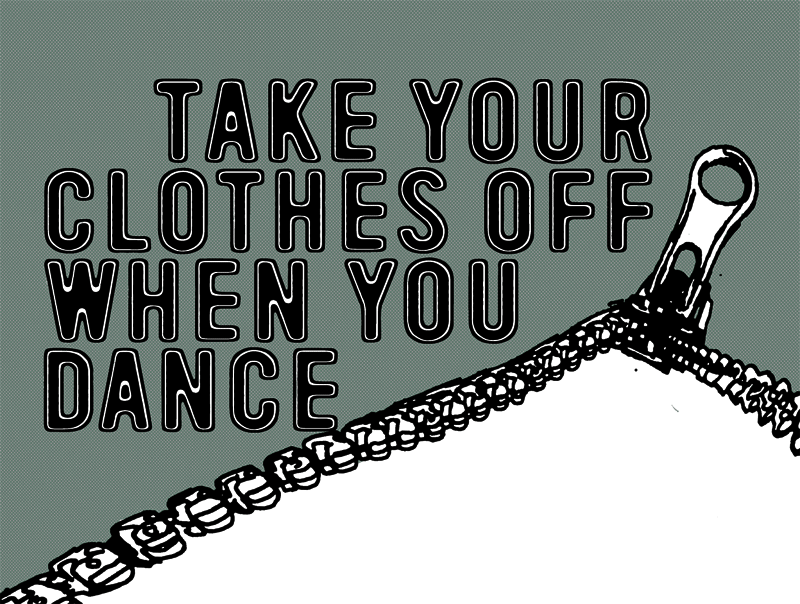
Become a part of the team
In order to feel "at ease" in a new team, it is important for any person to understand that he is part of the group. It is important on your part to show that you enjoy being in the group: do not be gloomy and overly serious, others may think that you do not like something. As a rule, this causes a defensive reaction in the group - people become serious towards you. Therefore, smile and enjoy the lesson, the fact that you are dancing with other people - you will be gladly received as a friendly and interested person. The teacher and the group will also show interest in you: ask questions, offer help. Do not push them away, do not be afraid, do not think that someone wants to offend you or violate your personal space - everyone wants to feel the community of the team and the cohesion of the team.
Talk to the teacher
Each student wants to know what he is doing, what he needs to work on more intensively, where to be more attentive.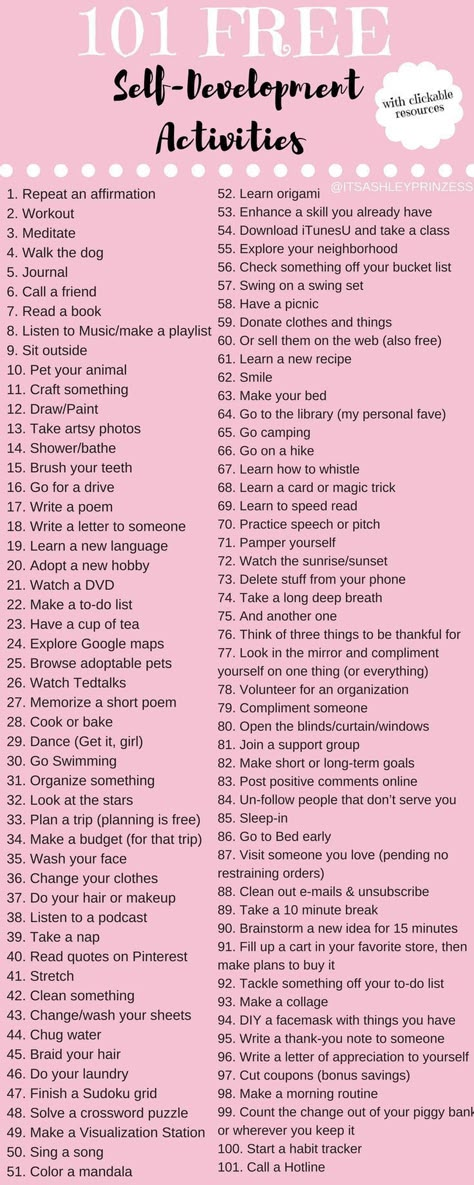 The answers to these questions do not need to be looked for exclusively in the mirror, they need to be received from the teacher, at least at first. The teacher will be able to point out your strengths and weaknesses, encourage, inspire and suggest directions for development. Feel free to ask questions, consult, consult with your coach. This conversation will allow you to draw conclusions about the coach, about the direction you have chosen, about your level at the moment and about your capabilities.
The answers to these questions do not need to be looked for exclusively in the mirror, they need to be received from the teacher, at least at first. The teacher will be able to point out your strengths and weaknesses, encourage, inspire and suggest directions for development. Feel free to ask questions, consult, consult with your coach. This conversation will allow you to draw conclusions about the coach, about the direction you have chosen, about your level at the moment and about your capabilities.
Treat dance lessons responsibly
Whether you started with a group that has just opened or joined an already established group, you should prepare for class. There are three main points of preparation:
- Repeat the learned movements, elements, dance sequences at home or before training so that the whole group works intensively and productively during the lesson (it’s one thing if a student doesn’t succeed, another thing, if he forgets the movements and makes no effort to remember!)
- Be collected and neat.
 Make sure that it is pleasant and comfortable to be near you during the lesson.
Make sure that it is pleasant and comfortable to be near you during the lesson. - Arrive to class on time, don't miss a workout without a good reason.
Dancing lessons are not only exciting, dynamic and bright. It is responsible, difficult and in some moments even scary. Do not be afraid to overcome yourself and work on yourself! And remember, EVERYONE CAN DANCE! Get started! Dare!
Training is, first of all, the repetition of the same action.
If you are learning a new figure or composition (variation, scheme, link, chain), then you need to repeat the same steps many, many times.
If you want to have a strong and beautiful movement, then you need to apply the same effort many, many times.
If you want to achieve accuracy, speed and coordination of movement, then you need to repeat the same sequence of actions many, many times.
For example:
• this could be an effort to straighten the knee;
• "straighten the knee before putting weight on the leg" action;
• sequence of actions “turn the body with the muscles of the back, take the leg out for a step, straighten the knee, start working with the supporting foot, collect the press and muscles of the buttocks, transfer weight, stretch the muscles of the body and arms”, etc. ;
;
• effort to pull the foot;
• effort to keep the press always assembled;
• effort to keep the shoulder blades always lowered;
• and so on……
In a nutshell, training is creating a healthy habit. In order for your body to move competently, coordinated, plastic, fast, strong and beautiful, you need to get used to holding and moving like that. And in order for it to get used to holding on and moving like that, you need to repeat the same action or effort many, many times.
When a useful habit has been formed, it is already difficult to get rid of it. If you try really hard and repeat the special moves and efforts every time you dance in training, you will get used to dancing correctly very quickly. And then you won't have to think about it every time.
Remember:
• the coach cannot create a habit for you and make some effort for you, because it is your body, not his, and it should make the effort, not the coach's body, because it is you to go to the tournament , and not the coach, and the judge will look at you, and not at the coach. The coach can only explain to you how to do it, what is right and wrong, and what needs to be done so that you are better than everyone else. And to do this is only your task and depends only on you.
The coach can only explain to you how to do it, what is right and wrong, and what needs to be done so that you are better than everyone else. And to do this is only your task and depends only on you.
• Only the one who trains and repeats the most, the strongest, the hardest, and the longest wins.
• There are a lot of dancers, but only one first place! Everyone wants to keep it busy, everyone goes to training, everyone tries the best they can, but only the one who tries the hardest every minute in training wins.
• One minute in practice when you were chatting, inattentive, or not trying your hardest - that's another couple that beat you in the tournament. Opponents do not sleep! They try hard in training and want to take first place as much as you do.
• A coach cannot make you dance the best, train and win. Only you decide whether you need it or not. A coach cannot teach you to dance better than anyone if you do not do everything possible for this.
• Losing is the loss of a lazy dancer, winning is the winning of a talented coach.
You need to train EVERY DAY. Preferably a few hours.
Before training, you MUST warm up - jump, stretch, squat.
Before an individual lesson and self-training, you should have a PLAN in your head, which you must definitely tell your partner. For example, something doesn't work in the waltz or you don't like your feet in Latin. This is what needs to be worked out.
After individual lessons and group lessons, IT IS OBLIGATORY TO WORK THE INFORMATION RECEIVED, otherwise the muscles WILL NOT REMEMBER ANYTHING.
Dynamic stereotype, or muscle memory, works for 48 hours (after class). If you do not repeat the information received, then at the next lesson you will have to start all over again - the muscles will ALL forget
Repeat songs as often as possible! Even repetition in the mind gives a huge positive result, because it is the brain, our thinking organ, that gives commands to our body!
Always work to the FULL POWER in class, in practice. If you dance without trying to IMPROVE SOMETHING, you do not grow as a dancer.
If you dance without trying to IMPROVE SOMETHING, you do not grow as a dancer.
Spend as much time as possible on BASE and TECHNIQUE. Without precise technique, everything you do looks amateurish.
If you are tired and your muscles hurt, it means YOU HAVE WORKED IN vain.
The start of a private lesson can be the most effective moment for all 45 minutes of class. It is at the beginning of the lesson that you can determine whether the teacher and students will work productively or spend “not very pleasant” time together.
This does not refer to the amount of information the dancers will receive or the benefit they can derive from this individual lesson. It's about the overall good mood that the teacher and dancers may or may not get from the lesson.
Ultimately, an individual lesson on a positive note is the key to being remembered as a good student who is a pleasure to work with. So, what do we need to do when you go to a private lesson? Here are 5 tips to keep in mind:
Have a plan for an individual lesson
You need to know exactly what questions you are going to ask the trainer, what aspects of your dance you need to check.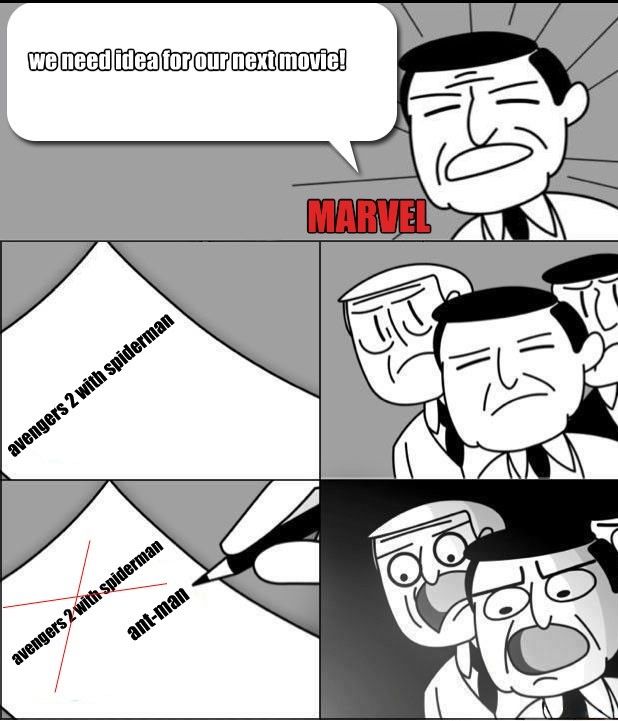 Even if you come to class with your trainer, don't expect them to know better than you what you need to work on. Start the lesson by briefly and clearly explaining to the coach what you would like to do today. And after that, everything will be in his hands.
Even if you come to class with your trainer, don't expect them to know better than you what you need to work on. Start the lesson by briefly and clearly explaining to the coach what you would like to do today. And after that, everything will be in his hands.
Show your human side
Remember that there is a person in front of you just like you. Like you, your teacher may have good and bad moments in life. For this reason, try to start the individual lesson in a more friendly way. Don't attack him with all your problems with your partner or with a bad result from the last competition.
Instead, try starting the conversation the way you would with your friend. For example, you can ask him how he is doing. If the coach is from another city or country, ask him or her how you got there, whether the flight was easy... These small details will positively affect the mood of the whole lesson. Both you and the teacher will benefit from this.
Be intuitive
As a general rule, different teachers may specialize in different areas of dance. Someone can be very useful in musicality, someone in technical aspects. Therefore, if you want to get the most help, try to choose a lesson topic in which the knowledge gained will become more effective.
Someone can be very useful in musicality, someone in technical aspects. Therefore, if you want to get the most help, try to choose a lesson topic in which the knowledge gained will become more effective.
This is especially important when you are working with intermediate teachers. When you take an individual lesson with dance legends, you can be sure that they will give you all the information you need and useful in your particular case.
But when you see a teacher with less experience, try to find his strongest point. You will get good information and he/she will work with you confidently.
Check how you look
If there's one thing that makes all teachers go crazy, it's when a student looks inappropriate. And this does not mean only the dress code. It's all about attitude. Hold yourself in such a way that you can be immediately identified as a dancer. Always focus on the lesson. Don't yawn and never lose the thought discussed in the lesson.
Be a couple
Last but not least! Since we are talking about ballroom dancing, the most important aspect is the couple. Be a team!
Definitely, this is the most unpleasant thing when a partner and a partner argue with each other in the presence of a teacher. We all know that this happens to all couples sometimes. But let's not forget that this is the most difficult moment for the teacher when he/she has to look at this theatre.
Communication between student and teacher is the most important
In our dancesport world, connection and feelings between people are often the reason to tell a good dancer from a bad one. It's clear to everyone how important it is to be seen as a genuine, positive, hard-working person, and not someone obsessed only with the need to get results.
This is why this article does not mention the actual level of dancing you are at. All of these aspects, which are immediately felt by teachers as soon as they start working with you, are the main reason for liking you or not.
1. Competitors must:
- know and strictly follow the Rules, Regulations, program of competitions, conditions for their holding;
- to have record classification books, as well as other documents, if they are provided for by the Competition Regulations, and present them to the secretariat during registration;
- register for participation in the tournament at the time allotted for registration;
- have a neat appearance, suits appropriate for the competition;
- timely get acquainted with the plan-scenario of the competition, the schedule of entries, observe the schedule established for the tournament, stay in the places reserved for participants;
- enter the parquet in the order of entries scheduled for this stage of the competition;
- if there is one exit to the tournament area, the couples leaving the parquet must let the couples leaving the next run;
- follow the orders of the judges;
- if it is impossible for any reason to continue the competition, immediately inform the chief judge about this;
- when participating in the finals, enter the awards ceremony in the appropriate tournament costumes;
- at the end of the competition, through his representative or independently endorse the results of his performance in the classification books.
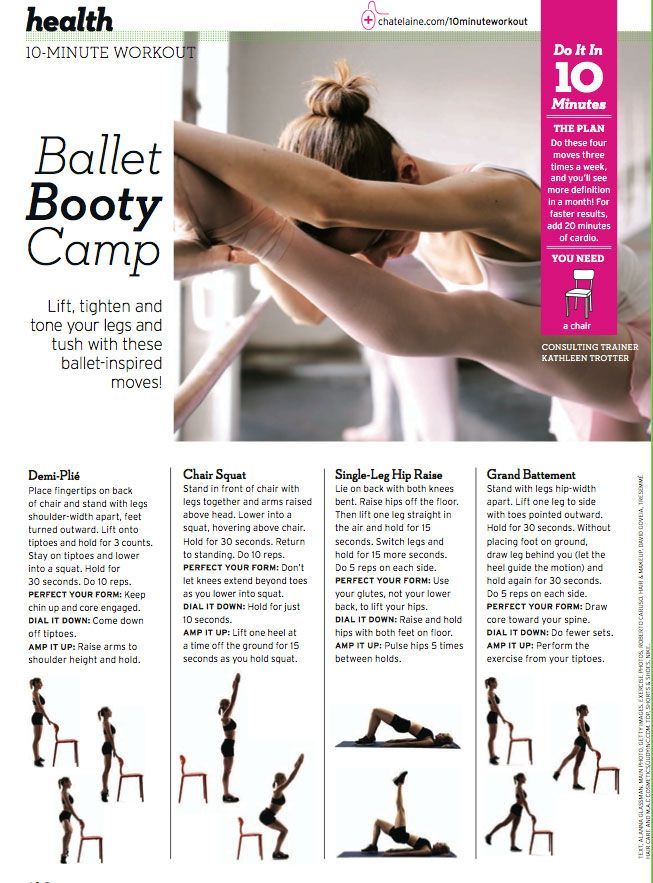
Note: in case of violation of the Rules or incorrect behavior, the main panel of judges issues a warning to the participant. In case of repeated violation, the athlete is suspended from participation in the tournament. In case of especially gross violations, the athlete may be suspended from participation in the tournament by decision of the panel of judges without warning.
2. Competitors have the right:
- to have a representative (one from the collective or team) to resolve all issues that arise during the tournament;
- when holding tournaments in certain types of competitions, take part in one or more types of choice, stating this at registration;
- have the same accommodation conditions as other competitors;
- at the end of registration, no later than 15 minutes before the start of the competition, receive information on the procedure for holding the tournament;
- in the prescribed manner, before the start of the next stage, to receive information about the results of the preliminary rounds;
- for accommodation, registration and warm-up, contact the judges at the participants;
- on the issues of holding the tournament, through your representative (captain), contact the deputy chief judge, chief secretary, chief judge;
- at the end of the tournament, through your representative (captain), receive full information from the secretariat about the number of participants, the place taken, the coefficient of the tournament, entering it into the classification book.
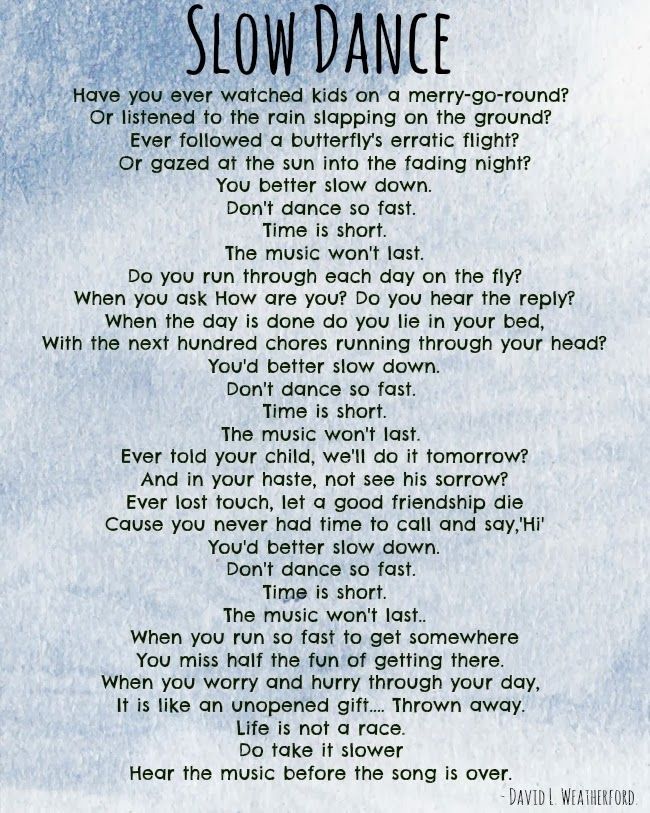
"Sports ethics" is usually called a set of norms of behavior that regulate people's relations in the field of sports activities. In the ordinary sense, it is perceived as unwritten norms of behavior for people involved in sports. On the other hand, relatively recently sports ethics began to be considered as a science, an important part of general ethics. Both of these interpretations are closely interconnected, interdependent, often intertwined and have a common basis - morality as a necessary quality for favorable, positive relationships between participants in the sports process.
The ability to behave under the most difficult circumstances, which is a sign of internal organization, composure, discipline, culture - this is also the prerogative of sports ethics. For example, an athlete should never get into an argument with a judge. The unwritten laws of sports do not allow you to refuse to perform, play for time, leave the race, stop the game ahead of time, even if the athlete is sure that he still lost. It is unethical to express annoyance from dissatisfaction with a partner, rival. It is especially important to be able to control yourself after a loss. With dignity, paying tribute to the skill of the opponent, congratulate him on his victory. Attitude towards an opponent is an indicator of the true upbringing of an athlete.
It is unethical to express annoyance from dissatisfaction with a partner, rival. It is especially important to be able to control yourself after a loss. With dignity, paying tribute to the skill of the opponent, congratulate him on his victory. Attitude towards an opponent is an indicator of the true upbringing of an athlete.
Genuine ethics in sport is associated with such value concepts as patriotism, duty and responsibility, friendship and collectivism, honor and dignity, justice and disinterestedness. Along with the development of interethnic and international sports relations, the norms of sports ethics acquire a universal character. A number of them are enshrined in the international rules for competitions in sports, and in a generalized form - in such official and semi-official establishments as the Olympic Rules, the Sports Manifesto and the Principle of Fair Play, introduced under the auspices of CIEPS (one of the cultural organizations of UNESCO) , etc. Since these norms are consistent with the universal norms of humane relations, they are part of the ethics of Russian athletes.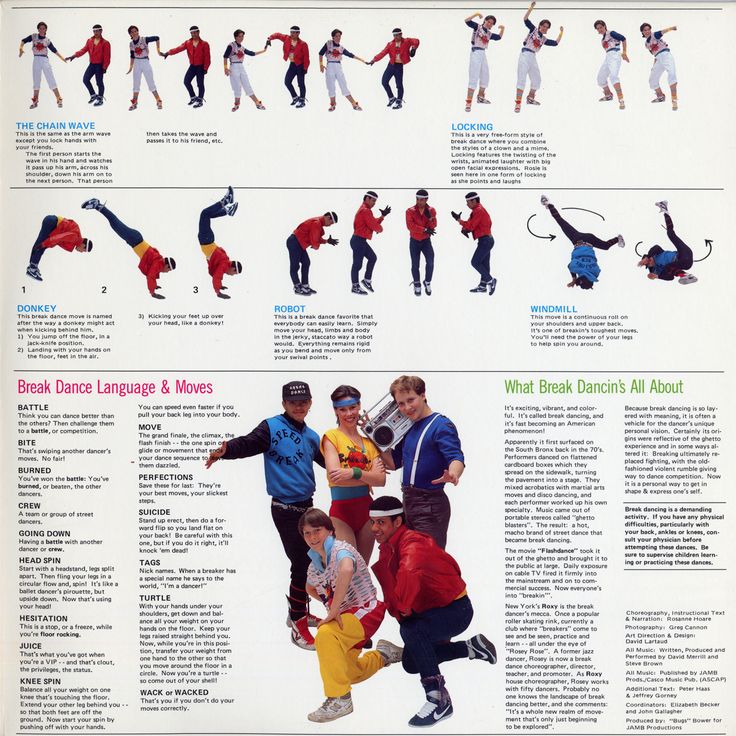
Human behavior is largely based on moral principles that reflect the moral side of his personality. The relations between the subjects of sports activities are based on universal moral principles: honesty, decency, justice, sense of duty, patriotism, collectivism, humanity, respect, reasonableness, courage and honor, etc.
are reduced to the requirements to behave in sports in a way worthy of a person: to honestly observe the established rules of the competition, not to resort to prohibited methods of achieving superiority over an opponent, not to be rude, etc. The reasons for deviations from the norms often lie not in ignorance of what is what is moral and what is immoral in sports, but in the absence of firm convictions and strong skills of moral behavior developed in relation to the characteristics of sports activities. Its specificity is such that even an athlete who has general moral convictions, but does not have practical experience brought to stable behavioral skills in difficult sports situations, may find himself in the role of a violator of the rules of sports ethics. This is the reason for the paramount importance of the methods of practical training in the process of mastering its norms.
This is the reason for the paramount importance of the methods of practical training in the process of mastering its norms.
Moral convictions are formed in the process of a person gaining moral experience of behavior. Therefore, the influence of the family, comrades in sports and studies, the media, especially television, is of some importance. It is also impossible to ignore self-education, which, together with upbringing, is one of the interdependent and complementary aspects of a single process of personality formation and development, a complex process that affects the entire spiritual world of a person with a special role for the mental sphere.
Before the tournament:
- Prepare in the evening and tidy up the costume.
- On the eve of the tournament, the partner visits the hairdresser.
- Don't forget hairspray, cosmetics, eau de toilette and number pins.
- Clean shoes, glue if necessary.
- Don't forget sandwiches and drinks.

- Get your hair done (at home!), at the tournament, if necessary, fix it.
- If you want to take a coach with you to the tournament, take care of his travel and free admission to the tournament - for a coach, being at a tournament is work!
- Be at the competition 1 - 1.5 hours before the start.
- It is advisable for all club members participating in the tournament, as well as fans, to stay close to support each other.
- By the start of the competition, dancers must consider the entire hall and venue of the tournament, so as not to do this during the event.
- One of the partners or parents to control the registration of the couple;
- View the tournament schedule, the category performance program - if necessary, write down the order;
- 10 minutes before the performance, it is necessary to warm up;
- From now on, the dancers must be together, in pairs;
- After the dance, dancers must approach the coach (if the coach is with you) and not their parents;
- Closely monitor entries and control the order of your participation.

- If you didn't exit on your turn, exit on the next one.
- Write down or buy "crosses" (printout with marks) for dances or places in the final for your couple. This is necessary for the coach for further analysis and work with your pair.
- If a dance couple has been remarked (parents should not panic and find out the nature of the remarks) - report the remark to the coach - he will be able to explain what happened to you and adequately respond to it, if necessary.
At the tournament:
- Be at the competition 1-1.5 hours before the start.
- It is advisable for all club members participating in the tournament, as well as fans, to stay close to support each other.
- By the start of the competition, dancers must consider the entire hall and venue of the tournament, so as not to do this during the event.
- View the tournament schedule, the category performance program - if necessary, write down the order;
- 10 minutes before the performance, it is necessary to warm up;
- From now on, the dancers must be together, in pairs;
- After the dance, dancers must approach the coach (if the coach is with you) and not their parents;
- Closely monitor entries and control the order of your participation.

- If you didn't exit on your turn, exit on the next one.
- Write down or buy "crosses" (printout with marks) for dances or places in the final for your couple. This is necessary for the coach for further analysis and work with your pair.
When starting to take their child to ballroom dancing classes, many parents refuse to participate in competitions, motivating them to do it for themselves. Others do not exclude participation in competitions, but choose 2-3 major tournaments per year. They are convinced that you first need to reach a certain level, and only after that think about rewards.
In fact, participation in competitions is important both for those who simply want to learn how to dance, and if the goal is victories and great acrylic prizes.
Competitions are an incentive for improvement and a second wind
Participation in tournaments and competitions keep dancers in good shape, make them constantly stay in good shape.-Step-18.jpg/aid1640374-v4-728px-Shuffle-(Dance-Move)-Step-18.jpg) In addition, any competitions temper character, shape personality, bring up willpower, composure, faith in victory. Even if you are dancing for yourself, why refuse such a bonus.
In addition, any competitions temper character, shape personality, bring up willpower, composure, faith in victory. Even if you are dancing for yourself, why refuse such a bonus.
At competitions, children learn to empathize, cheer for each other, a team spirit is brought up, friendship grows stronger. By refusing to participate in competitions, parents tear the child away from the team, deprive him of the emotions necessary for raising a harmonious personality.
Refusal to participate in competitions reduces interest. Many children who show excellent results in the first year of training, subsequently begin to hack, lose interest in classes and soon give up dancing or continue to study only under pressure from adults. Interest burns out if it is not reinforced from the outside.
At competitions, participants compare themselves with other dancers, evaluate their strength. There is excitement, a spirit of competition. Winners receive a worthy reward for their work. The losers get a second wind, there is a desire to prove that they, too, are capable of more. You can do it for yourself and not dream of becoming a world champion and a coach, but the acquired skills and strong character in life will not hurt anyone.
The losers get a second wind, there is a desire to prove that they, too, are capable of more. You can do it for yourself and not dream of becoming a world champion and a coach, but the acquired skills and strong character in life will not hurt anyone.
Tournament practice is an important condition for victory
Those who believe that it is possible to participate in competitions only after reaching a certain level of skill are also mistaken. They throw all their strength into training - they drive compositions, study technique, take individual lessons. Only this is not enough.
Competitions are stress, excitement, adrenaline rush. To learn to control oneself, the practice of participating in events of this kind is necessary. Only when you start going to tournaments as a job, experience appears. The dancer learns to cope with difficulties, begins to hear the music, can concentrate, understands how to interact with the public, fans and fans.
Dance floor skills play a huge role. Competition is always a new environment. The ability to profitably present oneself, choose the right angle, not get lost in the crowd, cope with unforeseen situations - this and other invaluable experience is worked out only in practice.
Competition is always a new environment. The ability to profitably present oneself, choose the right angle, not get lost in the crowd, cope with unforeseen situations - this and other invaluable experience is worked out only in practice.
There is also a rating of dancers. Winning a tournament for a permanent leader, who is known by the judges and loved by the fans, is easier than for a talent that has emerged from oblivion. Even if it's worth it. Each competition ends with a mandatory debriefing, analysis of mistakes and strengths.
Refusing to participate in ballroom dancing competitions means depriving the dancer of the fuel that moves him forward, both in dance activity and in life.
1. Never, under any circumstances, compare yourself to other performers.
2. Know your purpose clearly! Who do you want to become. If you don't know, don't be afraid to experiment.
3. In all colors and tones, imagine yourself to be who you want to become. This should be your daily work on yourself.
This should be your daily work on yourself.
4. Constantly listen to music, varied in styles and trends. Don't stop looking for something new for yourself.
5. Don't skip rehearsals/trainings for any reason.
6. Practice all the material learned in class or training at home.
7. Be sure to check with the teacher or coach after the rehearsal or training for all elements of movements that are unclear to you during the lesson.
8. Don't take everything for granted. You are given the opportunity and conditions for development. Then you decide what to do with the acquired knowledge - apply or forget.
9. If something doesn't work out for you, it's just an excuse to work with double strength. Don't whine! Don't complain! Get up, get together and move forward towards your goal!
10. Improvisation. Be sure to improvise, combine different combinations and movements. Try, try and try again! This will be a good impetus for your professional growth.
11. Be interested in what you do, what you dance. Always improve, look for new knowledge from other masters.
12. And remember the most important thing: dance is the soul dancing to the music!
Street Dancing: How the Dance Battle Works
Competition Rules
Most of the competitions are held in the knockout battle format. Some of them involve only two dancers competing against each other in one-on-one battles, and there is also the concept of entire teams competing against each other. Each team can consist of two dancers to eight, ten, and sometimes more.
In team battles, any number of people can participate in a routine (prepared combination) - from two to the whole team, the dance is performed during the round. Opponents are not required to respond with a routine, each team independently decides what they do during their round, if certain rules are not stipulated within the competition.
O'trip House doing routine
© Little Shao/Red Bull Content Pool
Dancers or teams take turns dancing in the middle of the dance floor. Each dancer or team dances a certain number of rounds of
Each dancer or team dances a certain number of rounds of
The dancers take turns moving to the middle of the stage, dancing throughout their round. The chosen panel of judges then decides who they think won the battle by personally voting for the winner or holding up the card with the winner's name.
The winner of the battle advances to the next round, and the loser is eliminated from the competition.
This continues until there are two dancers or two teams left. After that, the final battle takes place and the absolute winner of the competition is selected.
Menno wins Red Bull BC One 2017
© Little Shao/Red Bull Content Pool
How many people can compete?
The average number of dancers selected to compete is usually 16 solo dancers or 8 to 16 teams competing in a single style or mixed style battle. But in the main battle, from 4 to 32 dancers or teams can participate.
In order to participate in the main battle, dancers must first pass the qualifying stage, where judges will select participants with the necessary qualifications.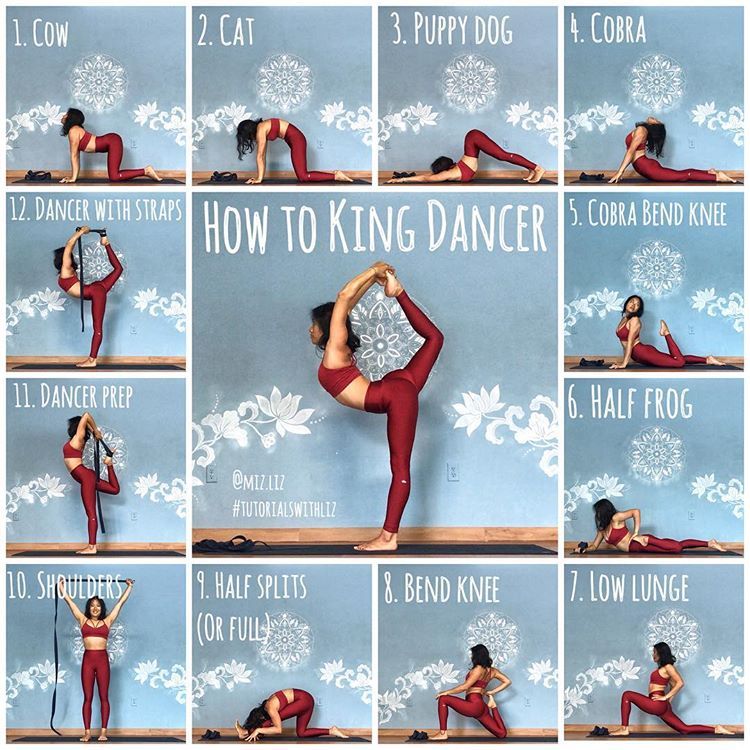 From 30 to 500 dancers can take part in the qualifying stage. There are five ways to enter the competition.
From 30 to 500 dancers can take part in the qualifying stage. There are five ways to enter the competition.
-
Showcase round: dancers take turns performing in front of the judges. The judges evaluate each participant, then choose the best dancers with the highest scores. They are allowed to compete.
-
Showcase battle: in this case, dancers or teams compete with each other in an exhibition battle format, usually consisting of only one round, and in the case of team battles, a time limit may also be introduced. There is no one winner in the battle: the judges evaluate the performance of the participants in the battle and choose the dancers or teams with the most points. They will be allowed to participate in the main competition.
-
Qualifying Cypher: The cipher format involves the dancers gathering in a circle and then taking turns moving to the middle and dancing. Usually the duration of the music program put on by the DJ is from 30 minutes to an hour and a half.
 The dancers are usually given a sticker with a number, and then they stand in circles and just dance for as long as they want. The judges move from circle to circle, observing and judging, as well as recording the numbers of those dancers who made the most impression on them. After the performance time is up, the judges get together and analyze which participants' numbers were recorded and marked by all the judges. It is these dancers who will be allowed to participate in the main competition.
The dancers are usually given a sticker with a number, and then they stand in circles and just dance for as long as they want. The judges move from circle to circle, observing and judging, as well as recording the numbers of those dancers who made the most impression on them. After the performance time is up, the judges get together and analyze which participants' numbers were recorded and marked by all the judges. It is these dancers who will be allowed to participate in the main competition. -
Winner of the previous qualifying battle: in this case, the dancer is allowed to participate in the competition based on winning another tournament.
-
By Invitation: The fifth and final way to compete is simply by getting an invitation. If a dancer is known and has a good reputation due to his performances and victories in various competitions at the local or international level, then the organizer of the event can directly invite him to take part in the battles.

Russian cipher Red Bull BC One
© Dmitriy Tibekin / Red Bull Content Pool
Who are judges and what do they do?
As a rule, judges are well-known and respected dancers who enter the judging panel based on their long experience, numerous victories in various competitions or thanks to their global contribution to the dance field.
Competitions always have an odd number of judges to avoid situations with a tie. As a rule, the judging staff includes three or five people.
Each judge only votes for one contestant in each battle and the winner is the dancer with the most votes.
The Judges Point to the Winner
© Gianfranco Tripodo/Red Bull Content Pool
Votes sometimes result in a tie, and this is preceded by one of two scenarios.
-
The judges may vote for a draw if they believe that the level of the dancers participating in the battle is equal. The battle can end in a draw if all the judges vote for this result.

-
A situation may arise in which one judge votes for a draw, while the votes of the other judges are divided equally.
In this case, the competing dancers or teams will have to play another round for the judges to vote again. If this additional round also results in a tie, the dancers play another round and continue to do so until the judges reach a decision that will determine the winner.
But if all but one of the judges voted for a draw, then the winner is the dancer who receives the casting vote of the judge who did not vote for the draw.
What criteria do the judges evaluate when determining the winner?
As a general rule, judges base themselves on a general list of criteria, consisting of eight items, which they pay attention to when judging. These criteria are given in no particular order:
Musicality
How well the dancer feels the music and uses it to express himself in the dance.
Mastery of the base
Demonstration of excellent mastery of the basics of top rock and footwork, descents, transitions, freezes and power moves.
Individuality
How well the dancers express their individuality in dance is judged.
The complexity of the elements
The level of dynamism of the movements that the dancer demonstrates.
Uniqueness and individuality of style are judged.
Execution
Technical and clean execution of elements without errors.
Round composition
The performance in the round must have a beginning, middle and end, which are connected by smooth and logical transitions.
Originality
Original variations of familiar movements, execution of completely new and unusual elements, as well as demonstration of a technique that the judges have not seen before.
When a battle is a one-on-one elimination competition, the judges take into account all the criteria, with each judge deciding for himself which points are more important. If the battle has a different concept or format, judges may pay more attention to some criteria than others, and accordingly, the general approach of the judge to assessing performance in competitions may change.
Below are the four different competition formats and a list of criteria that the judges primarily look at in a given competition:
-
Qualifying/showcase/preliminary rounds. Judges can choose a limited number of dancers. They strictly evaluate the performances, so in this case the criterion "performance" becomes the key. Any inaccuracies and errors in the performance of movements become a reason for giving a low score and simplify the task for the judge, narrowing the circle of applicants. The criteria "individuality" and "complexity of movement" are also of great importance.
-
Cypher king/queen competition. The judges pay great attention to criteria such as "style", "personality" and "musicality". In this format, breakers form a circle, then take turns starting to perform in the middle of it. As a rule, dancers are given a sticker with a number. The judges observe the participants and write down the numbers of the participants who made the greatest impression on them.
 (Sometimes the judge remains incognito, and it can be any member of the cipher). At the end of the time, the judges gather and decide who made the greatest impression on them - this person will be given the title of king / queen of the cipher.
(Sometimes the judge remains incognito, and it can be any member of the cipher). At the end of the time, the judges gather and decide who made the greatest impression on them - this person will be given the title of king / queen of the cipher. -
Team battles. The uniqueness of the team battle lies in the fact that different criteria are evaluated in different rounds, and based on this information, you can send the strongest team members to participate in certain rounds. This means that the team can strategize and send the strongest dancers to participate in the respective rounds.
Final
Watch as crews showcase their skills at the 30th anniversary of Battle of the Year in Montpellier, France.
Exception: audience-selected battles
On some projects, such as Red Bull Dance Your Style, the performances are judged by the audience, who may not understand all the subtleties, but simply dance lovers who came to enjoy the bright performances.
